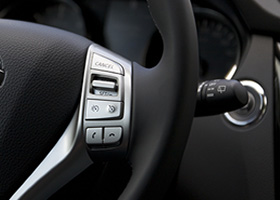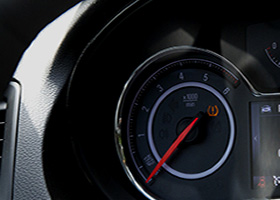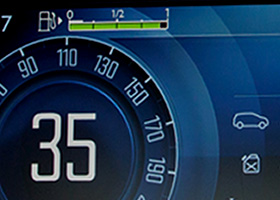

Digital car control systems have been a much discussed topic lately. They offer us a lot of features, but are often found difficult to use as well. So how did we get where we are?
Cars have been designed and produced already since 1888, among others by Karl Benz. This has since quickly evolved into the automated car industry as we currently know it.
Identity, emotion and design
In the second half of the 20th century, more and more car brands started to emerge, increasing competition on the car market. This made that apart from all the technical improvements, car manufacturers started to differentiate their cars on brand identity and emotion. Strong and powerful versus stylish and elegant. But also cheap and functional versus luxury and passionate. It became increasingly important for a brand to incorporate a recognisable signature in the design of the car so people would recognise a car on the streets.
The dashboard played a key role in this, as it was the place where functionality and identity came together. It had to be one with the exterior design. Especially on premium brands such as Audi, Mercedes, Jaguar and BMW, where build quality and craftsmanship of the interior is just as important as the expressed emotion of the exterior.
Evolution of the dashboard
For a long time operating a car was hard work and took a full attention of the driver. On top of that it required knowledge of all levers, knobs and switches to get the vehicle started, moving and slowed down again in time. As cars started driving increasingly faster it also became more important for the driver to keep his attention on the road. This forced the dashboard and all its controls to become more intuitive and less distracting to ensure the driver would be able to anticipate and react naturally to unexpected situations on the road.
Towards the end of the 20th century the knobs, sliders and switches on the dashboard went through a long process of refinement on position, material, form, color and tactile feedback, eventually settling in to their current position. This consensus on optimal positioning makes that many common controls -temperature, windows, lights or radio- are now easy to find and control when entering a new car for the first time or while driving.
Based on this evolution, we can conclude the dashboard always meets the following requirements:
- Controls for important functions are grouped together on the dashboard and can therefore be controlled almost blindly. For instance all climate controls are near eachother, just like lights and radio controls.
- Controls should be intuitive to use. Knobs and switches provide visual and tactile feedback on the expected behaviour.
- The ‘class’ of a car can be felt and experienced through the controls based on the applied material, design detail and tactile feedback.
- Through placement, use of colours and size differentiation primary tasks are emphasised on the dashboard.
There are also downsides to these physical controls on the dashboard. Space is limited on the dashboard. As cars evolved the amount of features grew and with them the amount of controls claiming a position on the dashboard. This resulted in smaller controls and overcrowded dashboards, making them much more difficult to operated.












